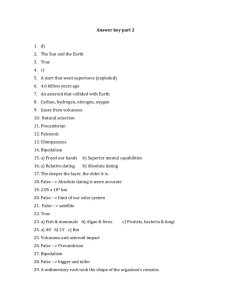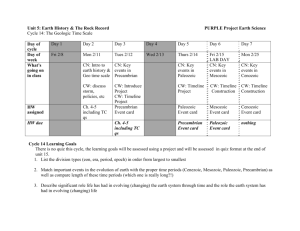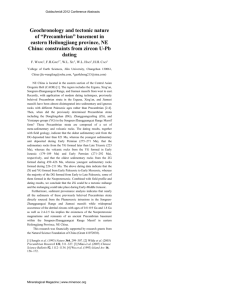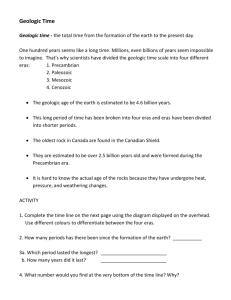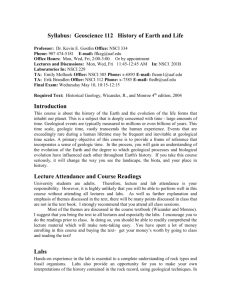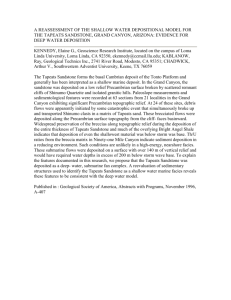Chapter 13 Web Exercises - McGraw Hill Higher Education
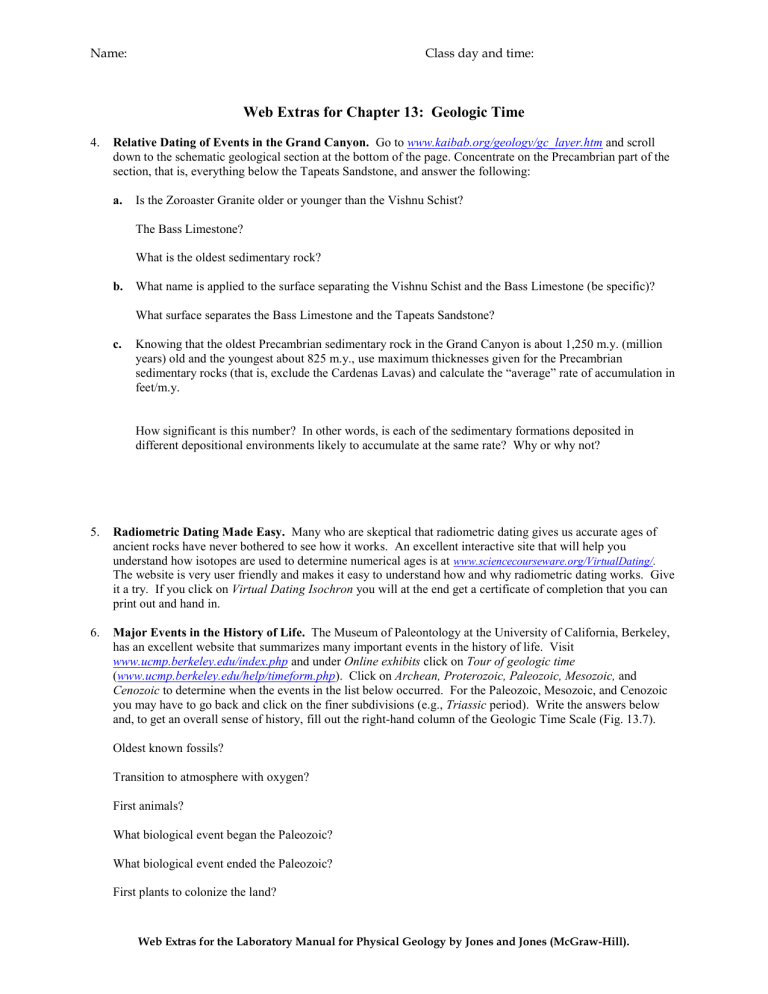
Name: Class day and time:
Web Extras for Chapter 13: Geologic Time
4.
Relative Dating of Events in the Grand Canyon.
Go to www.kaibab.org/geology/gc_layer.htm
and scroll down to the schematic geological section at the bottom of the page. Concentrate on the Precambrian part of the section, that is, everything below the Tapeats Sandstone, and answer the following: a.
Is the Zoroaster Granite older or younger than the Vishnu Schist?
The Bass Limestone?
What is the oldest sedimentary rock? b.
What name is applied to the surface separating the Vishnu Schist and the Bass Limestone (be specific)?
What surface separates the Bass Limestone and the Tapeats Sandstone? c.
Knowing that the oldest Precambrian sedimentary rock in the Grand Canyon is about 1,250 m.y. (million years) old and the youngest about 825 m.y., use maximum thicknesses given for the Precambrian sedimentary rocks (that is, exclude the Cardenas Lavas) and calculate the “average” rate of accumulation in feet/m.y.
How significant is this number? In other words, is each of the sedimentary formations deposited in different depositional environments likely to accumulate at the same rate? Why or why not?
5.
Radiometric Dating Made Easy.
Many who are skeptical that radiometric dating gives us accurate ages of ancient rocks have never bothered to see how it works. An excellent interactive site that will help you understand how isotopes are used to determine numerical ages is at www.sciencecourseware.org/VirtualDating/ .
The website is very user friendly and makes it easy to understand how and why radiometric dating works. Give it a try. If you click on Virtual Dating Isochron you will at the end get a certificate of completion that you can print out and hand in.
6.
Major Events in the History of Life.
The Museum of Paleontology at the University of California, Berkeley, has an excellent website that summarizes many important events in the history of life. Visit www.ucmp.berkeley.edu/index.php
and under Online exhibits click on Tour of geologic time
( www.ucmp.berkeley.edu/help/timeform.php
). Click on Archean, Proterozoic, Paleozoic, Mesozoic, and
Cenozoic to determine when the events in the list below occurred. For the Paleozoic, Mesozoic, and Cenozoic you may have to go back and click on the finer subdivisions (e.g., Triassic period). Write the answers below and, to get an overall sense of history, fill out the right-hand column of the Geologic Time Scale (Fig. 13.7).
Oldest known fossils?
Transition to atmosphere with oxygen?
First animals?
What biological event began the Paleozoic?
What biological event ended the Paleozoic?
First plants to colonize the land?
Web Extras for the Laboratory Manual for Physical Geology by Jones and Jones (McGraw-Hill).
First forests?
First tetrapods (four-legged vertebrates) to move on land?
First dinosaurs?
Start of breakup of Pangaea?
Early Mammals?
First flowering plants?
Extinction of the dinosaurs?
What is the Age of Mammals?
What else could the Cenozoic be called?
Web Extras for the Laboratory Manual for Physical Geology by Jones and Jones (McGraw-Hill).

